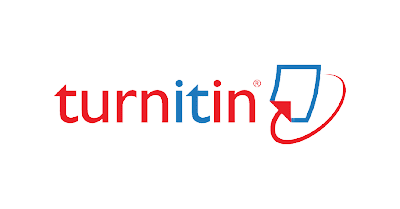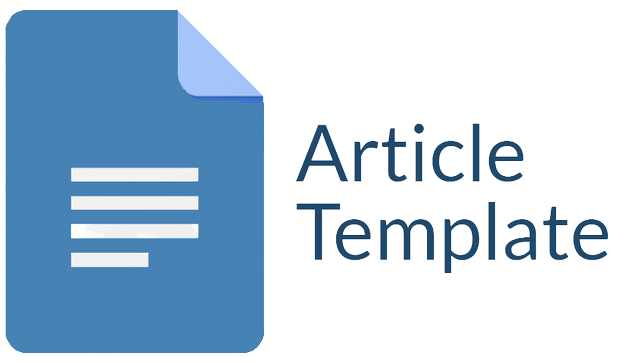PENERAPAN METODE SIMPLE ADDITIVE WEIGHTING (SAW) UNTUK MENYELEKSI PENERIMA BANTUAN LANGSUNG TUNAI DANA DESA (BLT DD)
Studi Kasus : Desa Pujo Basuki Kecamatan Trimurjo Kabupaten Lampung Tengah
Abstract
With many government programs to improve the social status of the community, one of which is the Village Fund Direct Assistance (BLTDD) program in Pujo Basuki Village, Central Lampung, with the hope that the community's economy can be helped by this program. Selecting the right beneficiary to receive such assistance must be done in a precise and accurate manner. From these issues, it is necessary to have a method to support decision making in order to determine the residents of this assistance program appropriately with the SAW (Simple Additive Weighting) method in the process of making a decision..
Downloads
References
Astika, D. A., Nugroho, D., & Irawati, T. (2018). Sistem Pendukung Keputusan Penerimaan Beras untuk Keluarga Miskin Menggunakan Metode Simple Additive Weighting di Kantor Kepala Desa Gumpang. Jurnal Teknologi Informasi Dan Komunikasi (TIKomSiN), 6(1).
Astuti, R., & Mukaromah, U. (2021). Model Manajemen Sistem Pendukung Keputusan Metode Simple Additive Weighting untuk Program Bantuan Langsung Tunai di Desa Luwungbata. Media Informatika, 19(3). https://doi.org/10.37595/mediainfo.v19i3.47
Desa, K., & Transmigrasi, P. D. T. dan. (2020). Panduan Pendataan Bantuan Langsung Tunai – BLT Dana Desa. E-Book.
Ermin, E., Sunardi, S., & Fadil, A. (2020). Metode Simple Additive Weighting Pada Penentuan Penerimaan Karyawan. Format : Jurnal Ilmiah Teknik Informatika, 8(2). https://doi.org/10.22441/format.2019.v8.i2.005
Herdiana, D., Wahidah, I., Nuraeni, N., & Salam, A. N. (2021). Implementasi Kebijakan Bantuan Langsung Tunai ( BLT ) Dana Desa Bagi Masyarakat Terdampak COVID-19 di Kabupaten Sumedang : Isu dan Tantangan. Jurnal Inspirasi, 12(1).
Kementerian Perencanaan Pembangunan Nasional. (2020). Panduan Pendataan Bantuan Langsung Tunai – BLT Dana Desa. Kementerian Perencanaan Pembangunan Nasional.
Kris Sintiana Putri, D., Nasiroh, N. S., Mutasim, R., Muslih, M., Saepudin, S., Gustian, D., Mupaat, & Asian, J. (2022). SISTEM PENDUKUNG KEPUTUSAN PEMULIHAN EKONOMI PASCA COVID-19 DENGAN METODE SIMPLE ADDITIVE WEIGHTING. Jurnal Rekayasa Teknologi Nusa Putra, 8(2). https://doi.org/10.52005/rekayasa.v8i2.146
Lubis, H., Salkiawati, R., & Hala, S. (2022). Penerapan Metode Simple Additive Weighting Untuk Penerimaan Bantuan Langsung Tunai Dana Desa. JSI (Jurnal Sistem Informasi) Universitas Suryadarma, 9(1).
Maifizar, A. (2018). Karakteristik dan Fenomena Kemiskinan Keluarga Miskin Pedesaan di Aceh. Community: Pengawas Dinamika Sosial, 2(3).
Marpaung, N. (2018). PENERAPAN METODE SIMPLE ADDITIVE WEIGHTING PADA SISTEM PENDUKUNG KEPUTUSAN UNTUK MENENTUKAN KENAIKAN GAJI KARYAWAN. JURTEKSI, 4(2). https://doi.org/10.33330/jurteksi.v4i2.58
Mude, M. A. (2016). Perbandingan Metode SAW dan TOPSIS pada kasus UMKM. ILKOM Jurnal Ilmiah, 8(2). https://doi.org/10.33096/ilkom.v8i2.49.76-81
Nursofwa, R. F., Sukur, M. H., & Kurniadi, B. K. (2020). Penanganan Pelayanan Kesehatan di Masa Pandemi Covid-19 dalam Perspektif Hukum Kesehatan. Inicio Legis, 1(1), 1–17.
Pangestu, F. A., Kusumawardani, D. M., Nanda, M. D., & Sari, M. K. (2019). Sistem Penyaluran Bantuan Kepada Keluarga Miskin di Desa Ciberem dengan Metode AHP. Conference on Electrical Engineering, Telematics, Industrial Technology, and Creative Media (CENTIVE), 2(1), 147–157.
Pranolo, A., & Widyastuti, S. M. (2014). Simple Additive Weighting Method on Intelligent Agent for Urban Forest Health Monitoring. 2014 International Conference on Computer, Control, Informatics and Its Applications (Ic3Ina), 132–135. https://doi.org/10.1109/IC3INA.2014.7042614
Ramadhani, T., & Megawati, R. E. N. (2021). KETIDAKMERATAAN BANTUAN PEMERINTAH KEPADA MASYARAKAT SELAMA PANDEMI COVID-19. Jurnal Hukum Magnum Opus, 4(2). https://doi.org/10.30996/jhmo.v4i2.5235
Sofi, I. (2021). EFEKTIVITAS BANTUAN LANGSUNG TUNAI DANA DESA DALAM PEMULIHAN EKONOMI DI DESA. Indonesian Treasury Review: Jurnal Perbendaharaan, Keuangan Negara Dan Kebijakan Publik, 6(3). https://doi.org/10.33105/itrev.v6i3.280
Suhariyanto, D. (2016). Penghitungan dan Analisis Kemiskinan Makro Indonesia. Badan Pusat Statistik.
Sukmawati, E. (2018). wahyunita yulia sari, indah sulistyoningrum. Farmakologi Kebidanan. Trans Info Media (TIM).
Sukmawati E, wahyunita yulia sari, & indah sulistyoningrum. (2018). Farmakologi Kebidanan. Trans Info Media (TIM). https://scholar.google.com/scholar?oi=bibs&cluster=11760770443894442881&btnI=1&hl=id
Susanto, E. R., Puspaningrum, A. S., & Neneng, N. (2021). Model Rekomendasi Penerima Bantuan Sosial Berdasarkan Data Kesejahteraan Rakyat. Jurnal Tekno Kompak, 15(1). https://doi.org/10.33365/jtk.v15i1.915
Sutanto, H., & Hardiningsih, P. (2021a). Akuntabilitas Pengelolaan BLT-Dana Desa Pada Masa Pandemi Covid-19. InFestasi, 17(1). https://doi.org/10.21107/infestasi.v17i1.9932
Sutanto, H., & Hardiningsih, P. (2021b). Akuntabilitas Pengelolaan BLT-Dana Desa pada Masa Pandemi Covid-19 Accountability of The BLT-Village Fund Management During The Covid-19 Pandemic. InFestasi, 17(1).
Tejasukmana Putra, R., Adi Wibowo, S., & Agus Pranoto, Y. (2021). SISTEM PENDUKUNG KEPUTUSAN PENERIMAAN BLT DI KECAMATAN SAMPANG MENGGUNAKAN METODE SAW DAN METODE AHP BERBASIS WEB. JATI (Jurnal Mahasiswa Teknik Informatika), 5(1). https://doi.org/10.36040/jati.v5i1.3236
Tika, M. F. (2021). Sistem Pendukung Keputusan Seleksi Penerima Program Bantuan Sosial Menggunakan Metode SAW. Emitor: Jurnal Teknik Elektro, 21(2). https://doi.org/10.23917/emitor.v21i2.13956
Copyright (c) 2022 Oviletta Aurellia, Untoro Apsiswanto

This work is licensed under a Creative Commons Attribution-ShareAlike 4.0 International License.
Jurnal allows anyone to compose, correct, and do derivative works, even for commercial purposes, as long as they credit for the original work. This license is the freest. It is recommended for maximum distribution and use of licensed material.
The submitted paper is assumed not to contain any proprietary materials that are not protected by patent rights or patent applications; The responsibility for technical content and protection of proprietary materials rests with the authors and their organizations and not the responsibility of journal or its editorial staff. The primary (first/appropriate) author is responsible for ensuring that the article has been viewed and approved by all other authors. The author's responsibility is to obtain all necessary copyright waivers to use any copyrighted material in the manuscript before submission.
Jurnal Pendidikan, Sains dan Teknologi allows the author(s) to hold the copyright without restrictions and allow the author(s) to retain publishing rights without restrictions. Jurnal Pendidikan, Sains dan Teknologi CC-BY-SA or an equivalent license as the optimal license for the publication, distribution, use, and reuse of scholarly work. Jurnal Pendidikan, Sains dan Teknologi allows the author(s) to hold the copyright without restrictions and allow the author(s) to retain publishing rights without restrictions. Jurnal Pendidikan, Sains dan Teknologi CC-BY-SA or an equivalent license as the optimal license for the publication, distribution, use, and reuse of scholarly work.
In developing strategy and setting priorities Jurnal Pendidikan, Sains dan Teknologi recognize that free access is better than priced access, libre access is better than free access, and libre under CC-BY-SA or the equivalent is better than libre under more restrictive open licenses. We should achieve what we can when we can. We should not delay achieving free in order to achieve libre, and we should not stop with free when we can achieve libre.
Jurnal Pendidikan, Sains dan Teknologi is licensed under a Creative Commons Attribution-ShareAlike 4.0 International License.
You are free to:
- Share a copy and redistribute the material in any medium or format
- Adapt a remix, transform, and build upon the material for any purpose, even commercially.
- The licensor cannot revoke these freedoms as long as you follow the license terms.






